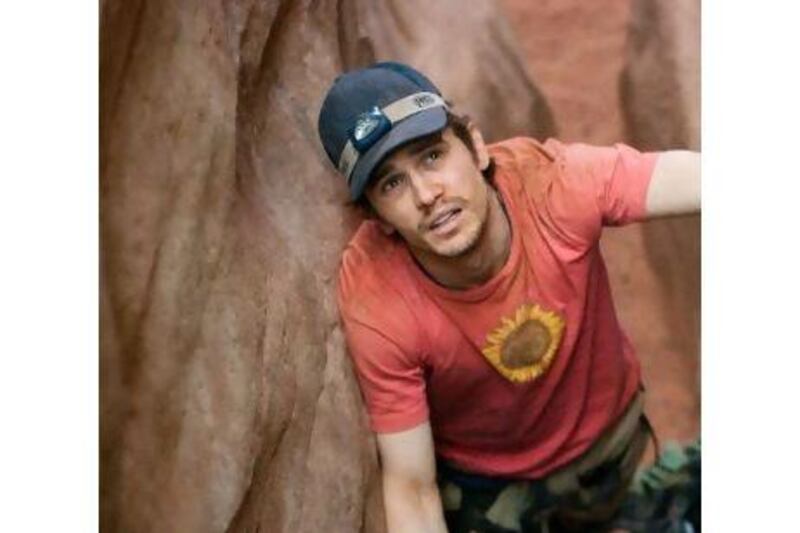Director Danny Boyle has never been one to shy away from gore (Trainspotting or 28 Days Later, anyone?) But with 127 Hours, showing this week at the Dubai International Film Festival, he may have surpassed himself. When the film was first shown at the Toronto Film Festival, three audience members fainted during the screening.
Some viewers and critics were quick to describe Boyle's new film as one of the goriest ever put to celluloid. 127 Hours is the retelling of the true story of Aron Ralston, a mountaineer who was pinned for five days by a boulder in a ravine in the rocky wilds of Utah. Ralston wrote about his 2003 mishap in a book called Between a Rock and a Hard Place, describing how he faced the choice between death and freeing himself by cutting off his trapped arm.
What he chose to do is clear from the fact that he lived to tell the tale, and it's the scenes in which the climber severs his left arm that have had audiences wincing.
Ralston is played by the Spider-Man star James Franco, who gives a career-best performance in the role. He starts off proceedings as a happy young man looking forward to spending the weekend on his mountain bike and going for a trek in the Bluejohn Canyon.
The film begins with Ralston finishing work and packing for the weekend. Crucially, he cannot find his good-quality Swiss Army knife, so takes a blunt penknife instead, in case he needs it for emergencies - a decision that will haunt him and, quite possibly, many viewers.
The scenes of Ralston listening to music, riding his bike and running and jumping between rocks screen like an advertisement for extreme sports. The camerawork by the cinematographers Erique Chediak and Anthony Dod Mantle is formidable throughout and mirrors the state of mind of the protagonist, which, in these early scenes, is full of life and vitality.
But after the highs come the lows. On his way back to his vehicle, Ralston falls into a deep ravine and his arm gets trapped between a boulder and the side. It's at this moment that Boyle begins teasing the audience and sending shivers down spines. Everyone knows that Ralston's arm is going to go, but what Boyle does so well, is show in graphic detail exactly how the bones and tendons react to such treatment.
Computer graphics are used frequently and mostly in the right places. What makes these scenes so effective is that Boyle does not really show all that much on screen. He leaves most of the more painful moments to the imagination, but the graphic visuals are horrifying enough. One memorable scene shows how a blunt knife would struggle to cut through tendons and nerves. And there is a moment when Ralston uses another rock to break his arm.
But this is not a gore-fest in the traditional sense, with blood everywhere. Instead it plays on the audience's psychological response to the question of what to do when faced with mind-numbing pain and the need to make such a sacrifice. Boyle surpasses himself by putting the audience into Ralston's shoes, and the empathy is heightened by the fact that he comes across as extremely likeable.
Franco, who spends pretty much the whole film on screen alone, is magnificent. He is beguiling to watch and delivers a performance that shows Ralston's composure and inner strength. Some of his best scenes come in low-key moments, such as when he lays out his tools with his good limb and plots his escape. Boyle has once again come up trumps in telling the story of a man fighting against all the odds to survive.
Screening times for 127 Hours at DIFF: MOE 2, 6.30pm, Thursday, 5.15pm, Saturday.






